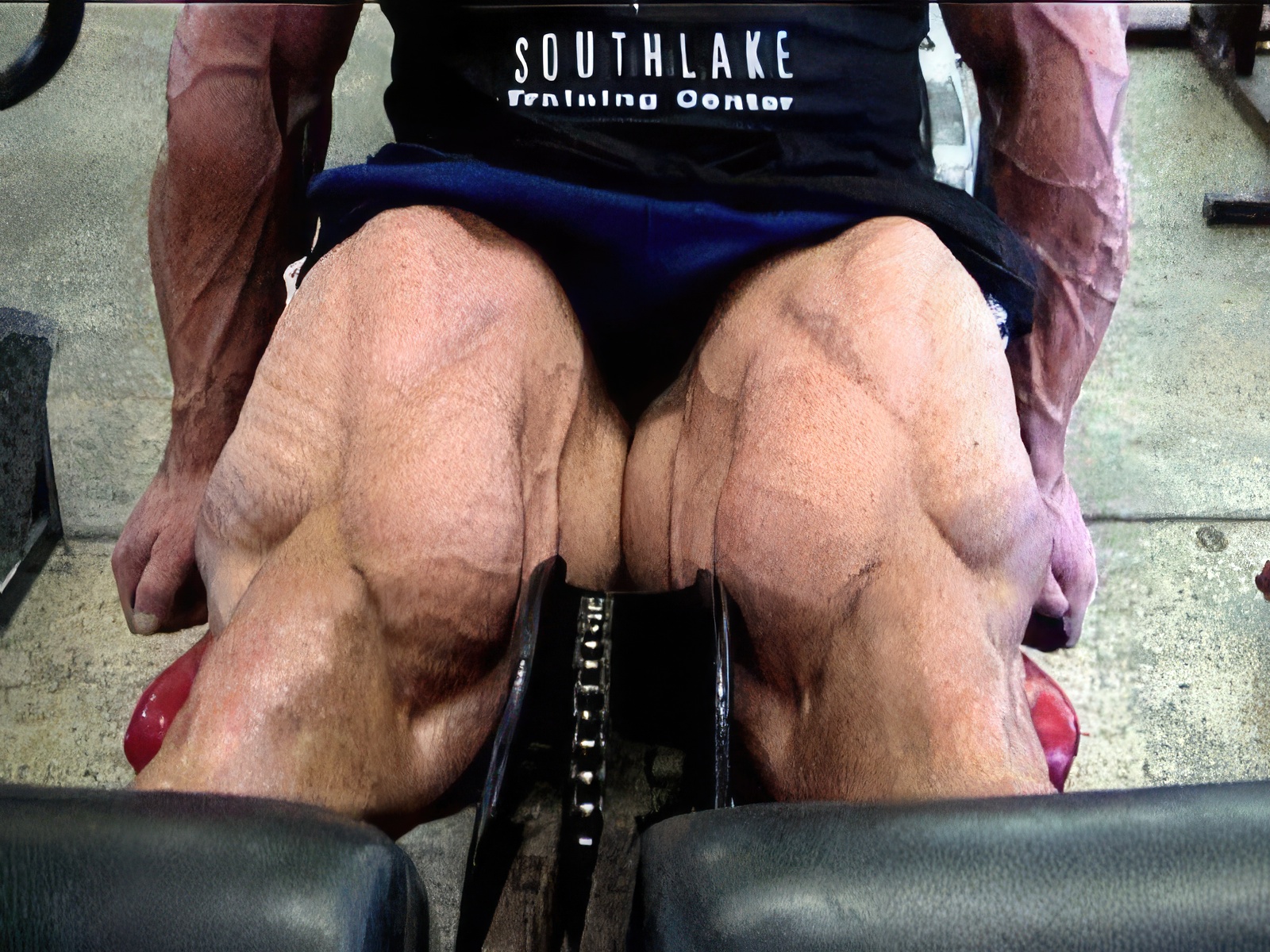
Joe Weider, to many the father of modern bodybuilding, developed a series of principles that I, even after 16 years of bodybuilding, still adhere to and agree 100% with. I learnt them right at the beginning of my bodybuilding activities and I truly believe that if you learn and use the Weider principles, you will do very well indeed.
The principles are actually to do with weight-training itself and how to train with maximum efficiency. Lets go through each principle one by one.
Muscle Priority Training.
To have a great physique your body must be balanced, with not one muscle group out of balance with the others. Unfortunately for most of us, we’ll have one or more muscle groups that seem to respond better and grow faster than the others – and we might even have some muscles that seem to refuse to grow at all.
To counter this, the Muscle Priority Training principle says that you should train your lagging muscles first in your workouts so that you are fresh and able to train them with maximum effort and intensity. This gives you the biggest chance of forcing your smaller muscles to grow.
Pyramid Training.
This principle helps reduce your risk of injury and is one I have religiously followed for my whole bodybuilding career. It is this: perform multiple sets for each exercise, and start with a light weight and gradually increase the weight each set up to your maximum weight that you will use for the last set or two.
This is especially important in the first exercise for each body part – when the muscles and other supporting muscles are at the coldest and most inflexible. Always perform a few light sets to warm the whole area up nicely before you start lifting heavier weights.
Set System Training.
This, quite simply, is to do more than one set per exercise. Normally utilized with pyramid training to ensure that each body part is sufficiently worked to cause hypertrophy (muscle growth) whilst training safely.
Pre-Exhaustion Training.
This is an advanced technique. Pre-exhaustion training involves using isolation exercises prior to compound exercises for each body part – in other words doing exercises that only or majorly use the muscle group in question before doing exercises that involve other muscle groups too.
An example is to do incline dumbbell flys before doing incline barbell presses. The flys involve only the pecs (and front delts) and so when you come to do the barbell press your pecs are already pre-exhausted and your pecs will be the first muscle group to fail when doing your presses. If you hadn’t done flys first then your triceps or delts may have reached failure (become exhause) first and so your pecs wouldn’t be worked as hard as required to prompt growth – and afterall, your doing the exercise to try and make your pecs grow!
Supersets.
Another advanced technique. A superset is where you perform two exercises back to back – with little or no rest between each set. The exercises can be for the same muscle group or opposing muscle groups. It can be a great way of upping the intensity of your workout when both sets are for the same muscle group or a fantastic way of speeding up your workout when training opposing muscle groups. Some say that super-setting keeps the blood in the region for longer, helping you grow faster but I just think it’s due to the higher intensity of the training.
You must be careful when using this or any advanced technique in your training as it is easy to overtrain when using intensity increasing techniques. Use them sparingly and only where you feel you need them (i.e. combine them with your muscle priority training regimen).
Tri-Sets.
One step further than supersets – tri-sets are three exercises performed one after the other with as little rest as possible for the same muscle group. Incredibly intense, very useful for stubborn bodyparts or breaking through plateaus. Very easy to overtrain with, though.
Giant Sets.
Yep, you guessed it. Giant sets are supersets and tri-sets taken to the very extreme, with four or five exercises performed back to back for one muscle group. Bonkers, brain out training only for the insane. 🙂 Do giant sets only occassionally or you WILL over-train.
Staggered Sets.
Staggered sets training is where you alternate between two muscle groups, often one large and one small (eg back and calves) set by set. I.e. a set of barbell rows followed by a set standing calf raises – repeated for as many sets as you are doing for each exercise. If you have a very stubborn body part then you can integrate calf exercises into the whole of your workout to really put the effort into making them grow. I do not really recommend this principle as it can take the focus of each muscle group and in the end, reduce your training intensity. It may work you, however!
Instinctive Training.
This is more about listening to your body and adapting your training to suit your needs. Don’t follow a training plan religiously for year after year. Watch how your body reacts to different training techniques, listen to how tired or over-trained you feel and monitor your aches and pains to find out which exercises suit your build and which don’t. Constantly try to learn and improve your training. Over time this becomes more and more instinctive and is something that will require much effort on your part to achieve – but it will be oh so worthwhile as you get bigger and bigger.
Conclusion
The Weider principles are a fantastic collection of techniques that you should definitely learn by heart and I feel that ultimately you will come to cherish them as much as I do. 16 years of bodybuilding have shown me how absolutely correct Joe was when he laid out the principles – they really have stood up to the test of time.

Guntur is a bodybuilding and powerlifting enthusiast. He is also the main author of this blog https://learn-bodybuilding.com/
Guntur also works as a Personal Trainer in his town.
In his free time, he likes to learn new languages and reading.
You can contact him from this website’s Contact Page.